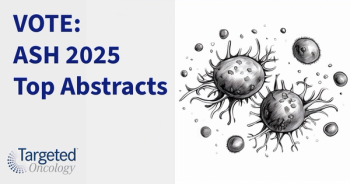
Liquid Biopsy of KRAS Predicts Survival in Advanced Pancreatic Cancer
A prospective study of retrospectively analyzed blood samples of patients with nonresectable pancreatic cancer found that plasma KRAS mutational burden correlates with overall survival (OS).
Vlada Melnikova, MD, PhD
A prospective study of retrospectively analyzed blood samples of patients with nonresectable pancreatic cancer found that plasmaKRASmutational burden correlates with overall survival (OS). Patients whose tumors had high levels ofKRASin their circulating tumor DNA (ctDNA) had decreased survival compared with those with low levels ofKRAS. Further, combining baseline levels and ctDNAKRASafter patients had 2 cycles of treatment was a better predictor of survival than baseline ctDNAKRASalone.
“KRASpretreatment plasma levels serve as a prognostic factor in this patient population. MonitoringKRASlevels in plasma and then combining baseline levels with longitudinal levels is a powerful predictor of overall survival,” stated coauthor of the study, Vlada Melnikova, MD, PhD, vice president for research and development at Trovagene Inc, San Diego, CA, the company developing and marketing the liquid biopsy test.
Melnikova reported results at the 2015 Annual Meeting of the American Association for Cancer Research (AACR). Archived plasma samples were prospectively collected from 182 patients with advanced or metastatic pancreatic cancer in the Danish BIOPAC study. There were 85 females and 97 males with a median age of 68 years, and all were undergoing treatment with either gemcitabine or FOLFIRINOX at the time the study was conducted.
A highly sensitive mutation enrichment assay for the detection ofKRASmutations in ctDNA was used to analyze the samples at baseline for association with OS and again for response to therapy; 640 plasma samples were collected from 182 patients. Of these, 176 patients had evaluable plasma samples at baseline.
Using a cut-off point of 5.5 copies /100,000 for low and highKRASlevels, a statistically significant negative association was found betweenKRASlevels and OS, showing that patients with lowerKRASlevels lived longer (P<.0001).
Among patients treated with gemcitabine, those with low baselineKRASlevels had a median survival of 296 days compared with 148 days for those with high baselineKRASlevels. Among the patients who received FOLIRINOX, median survival was 499 days for those with low baselineKRASlevels and 210 days for those with high baselineKRASlevels.
KRASmutational load in 176 patients with serially collected plasma samples was analyzed in a time-dependent manner. HighKRAScounts during treatment were significantly associated with lower OS (P<.001). The strength of this association was greater for post-baselineKRAScounts than it was for baselineKRAScounts.
Combining the baselineKRASand longitudinalKRASdata after 2 cycles of chemotherapy was an even better predictor of survival than baselineKRASalone. Patients were divided into 4 groups:
- those with low baselineKRASand low longitudinalKRAS(responders);
- those with low baselineKRASand high longitudinalKRAS(nonresponders);
- those with high baselineKRASand high longitudinalKRAS(nonresponders);
- and those with high baselineKRASand low longitudinalKRAS(responders).
Median survival for these four groups, based on combiningKRASlevels at baseline and after 2 cycles of chemotherapy, was 336 days, 252 days, 224 days, and 134 days, respectively.
“Circulating DNAKRASin plasma can be used for prognostic purposes and for monitoring patients with pancreatic cancer, as this study shows,” said Melnikova.
The plasma test can be ordered by physicians, and it is currently reimbursable under the not-otherwise-specified (NOS) code by some insurers, according to a Trovagene representative.









































